Hawks are predatory raptors that hunt and consume smaller animals, snakes, and frogs. They can detect ultraviolet light, which helps them hunt down their prey.
For tiny hawks like the Cooper’s Hawk and Sharp-shinned Hawk, look for them in the forest; for larger hawks, look for them on marshes, open grassland, or rocky mountains.
Red-shouldered Hawks are by far the most frequent hawk in Florida during the winter and summer.
Northern Harriers and Red-tailed Hawks are the most prevalent hawks in the wintertime.
According to avibase and arranged by the frequency of sightings registered on ebird, this article can assist you in identifying the hawk species found in Florida.
This data is communicated for every species. A few of these birds migrate, while others stay all year.
| Image | Name |
|---|---|
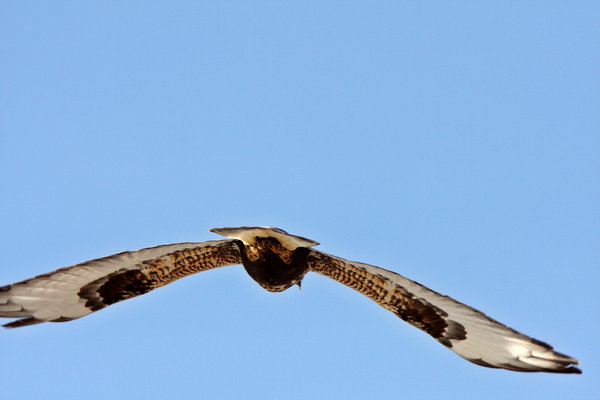 | Rough-legged Hawks |
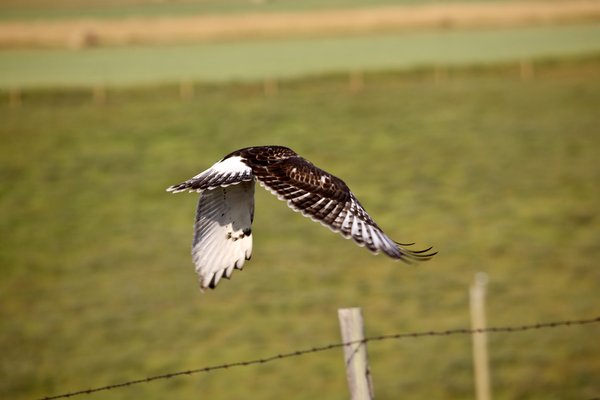 | Ferruginous Hawks |
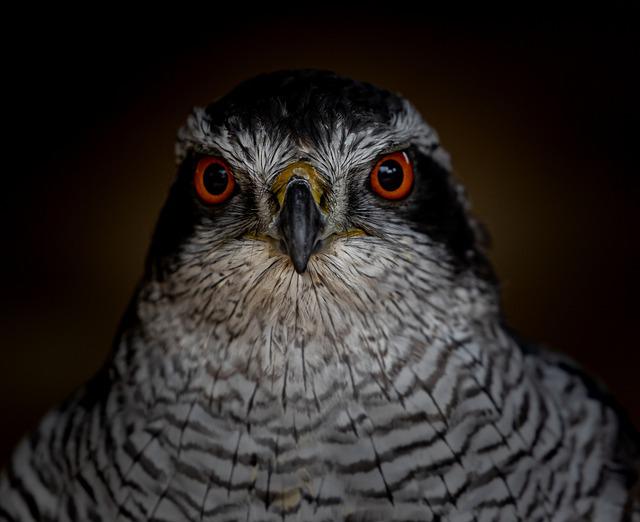 | Northern Goshawk |
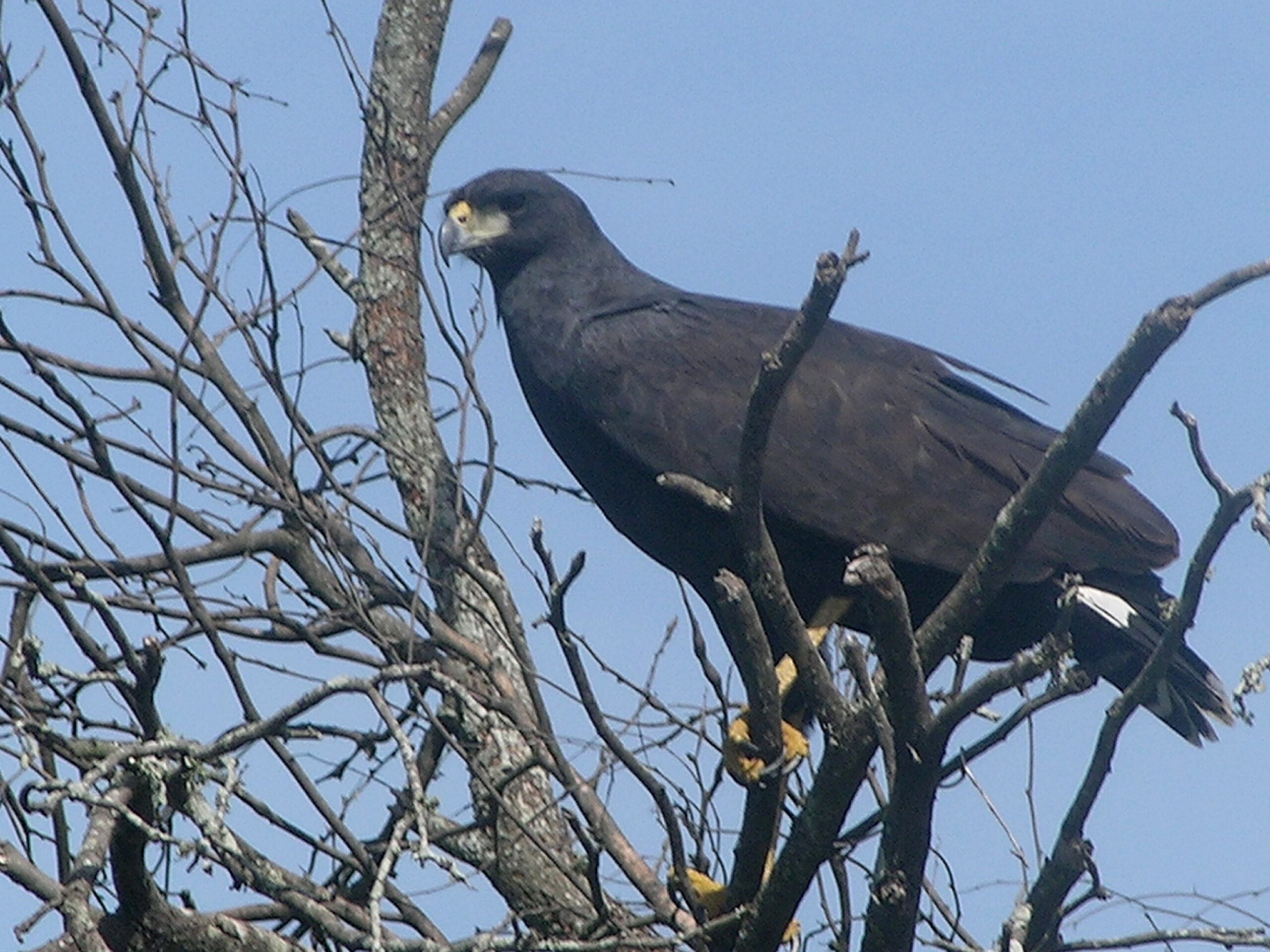 | Great Black Hawk |
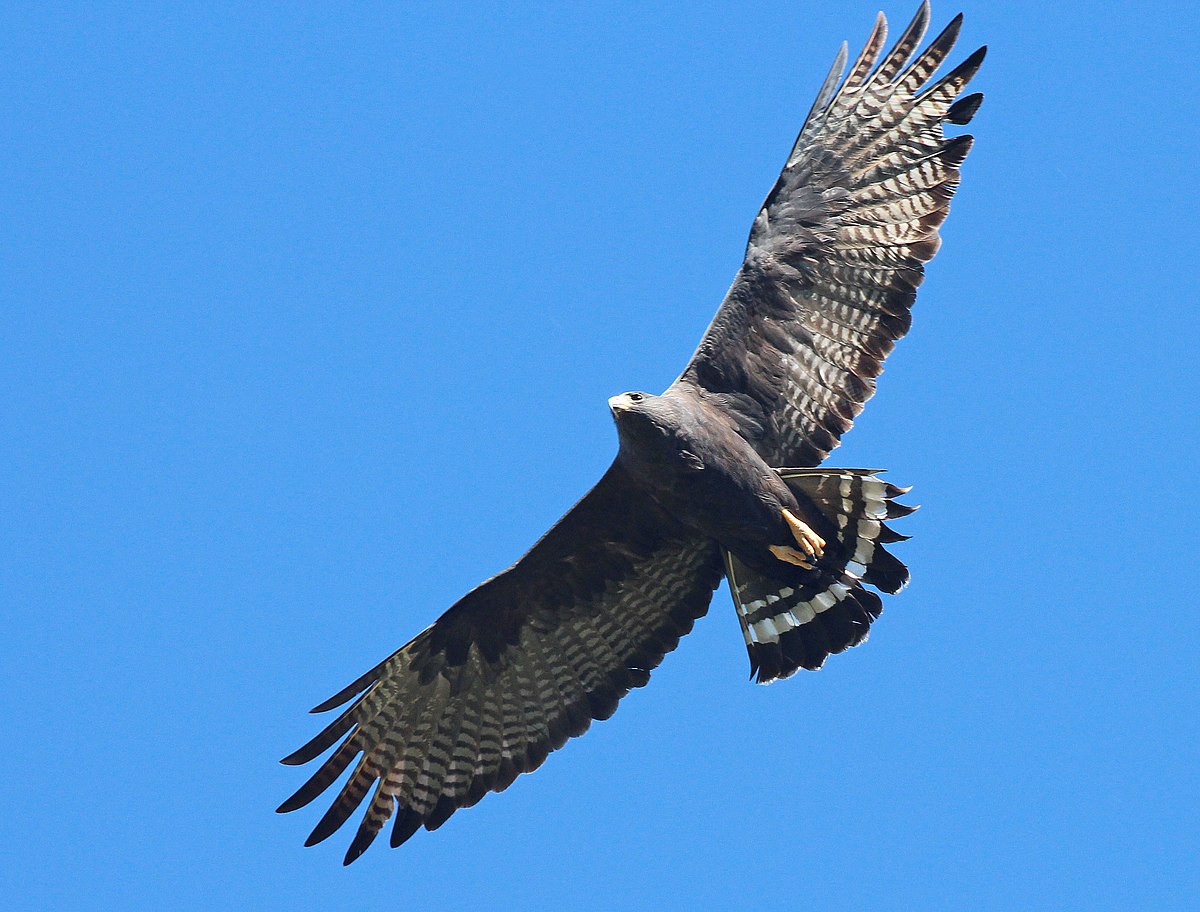 | Zone-tailed Hawk |
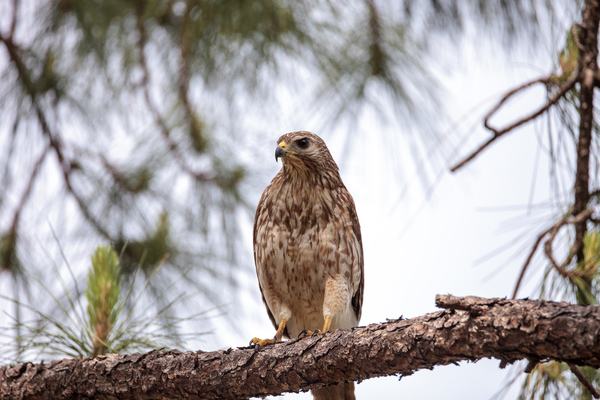 | Red-shouldered Hawk |
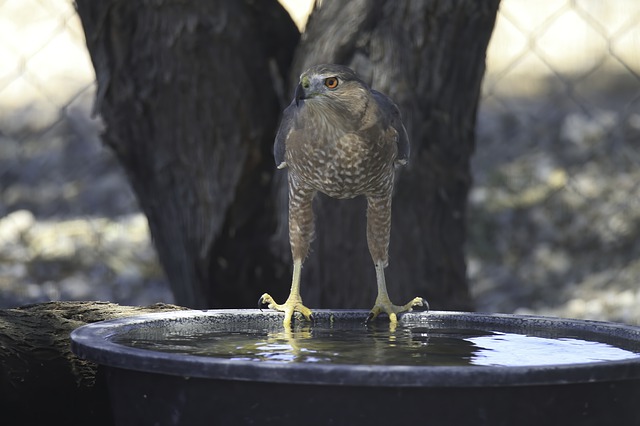 | Sharp-shinned Hawk |
Different Species of Hawks in Florida
1. Rough-legged Hawks

Rough-legged Hawks are huge hawks having broad wings and long tails, measuring up to 47-52 centimeters (18.5-20.5 inches) in length, 132-138 centimeters (52.0-54.3 inches) in wingspan, and approximately 715-1400 grams in weight (1.5-3 lb).
Rough-legged Hawks get their title from their distinctive feathered legs that stretch all the way down to their toes.
This adaption allows them to stay warmer in the cold.
Marshes, prairies, deserts, and meadows are all places where these hawks can be found. They are arctic breeders. Nesting takes place in tight holes or edges in steep cliffs or coniferous forests, as well as on top of big rocks and hillsides.
The typical clutch size is 2 to 5 eggs, with a 31-days incubation period.
Rough-legged Hawks come including both dark and light morphs, identical to certain hawks in Florida. Pale underwings, gray upperparts, and dark mottling throughout the body distinguish light variants.
This morph’s females have a grayish head, white coloration, blackish wrists and abdomen, and a white tail. Adult female light variants are identical to juvenile lighting morphs.
Darker patterns in wrists, dark brown underparts, and belly, white patches back of the forehead, and dark gray-blue upperparts characterize dark adult morphs.
The tails of females are black with wide tips. Dark morph juveniles have somewhat paler bodies, cheekbones, and eyebrows than adult females, as well as gray-banded grayish tails.
Rough-legged Hawks eat rodents mostly, but their diet varies depending on the season. When they’re mating, they eat voles and lemming; when they’re wintering, they consume smaller animals, including rodents, ground squirrels, and small mammals.
2. Ferruginous Hawks

Ferruginous Hawks, Florida’s biggest hawk, has arrived. They are distinguished by their big heads and lengthy wings.
Ferruginous Hawks are a considerably rarer species of hawk, so-called because of the rusty hue of their wings.
Ferruginous Hawks have a darkness and light morph, as seen by their different color patterns. Adult males and females have the same plumage pattern.
The simplest way to tell them apart is by their size.
Length & Weight
This hummingbird type measures 56 – 69 cm (22.1-27.2 inches) in length, 133 – 142 centimeters (52.4 – 55.9 inches) in wingspan, and weighs 977 – 2074 grams (2.2-4.6 lbs).
Females are bigger than males, as is the case with most hawks.
The light variants are the most prevalent, with white undertones to their pale heads, abdomen, and wings. Their legs are black, and the upper portions of their wings and backs are rusty brown. This morph’s juveniles have much more brown dots on their legs and belly.
The dark morphs, but on the other side, have brown-colored abdomen and underwings. White is the color of their tails and flying feathers on the wingtip.
The prairie, scrubland, pinyon-juniper forest borders, grasslands, and sagebrush steppe are all home to this huge hawk species. They prey on the land, from perches, or from the air.
Small animals account for the majority of its food. Jackrabbits, and Cottontail rabbits, as well as prairie dogs and ground squirrels, are also eaten due to availability.
Ferruginous Hawks frequently build their nests in shrubs or trees. Cliff ledges, power poles, dirt heaps, power poles, hay stacks, and high grounds are all places where this migratory bird builds.
Their typical clutch size is 1-8 eggs however they normally hatch 3-5 eggs, and the incubation period is 32-33 days.
3. Northern Goshawk

Northern Goshawks are small hawks with long tails, red eyes, black heads, and broad curved wings. Gray crowns, white brows, and delicately gray-barred abdomen distinguish them.
The dark slate upper parts of mature Northern Goshawks contrast with banded pale gray undersides.
Length & Weight
Females are somewhat bigger than males, measuring 53-64 centimeters (20.9-25.2 inches) in length, with a wingspan of 103-117 centimeters (40.5-46.1 inches) and weighing 631-1364 grams (1.4-3 lbs).
Juveniles are brown and steaky, with faint yellow eyeballs and light eyebrows, and thin black stripes on their tails.
Habitat
Goshawks are woodland birds that may be located in wide areas of both deciduous and coniferous hardwood woodland. During the wintertime, they will migrate to warmer climates.
They prefer mature woods with ancient and high deciduous forests like white fir, lodgepole pine, ponderosa pine, and Jeffrey pine for nesting.
Northern Goshawks have an average clutch size of 2 to 4 bluish-white eggs (about texture), deposited every 2 to 3 days.
Northern Goshawks are a kind of hawk found in Florida that is known for being a sit-and-wait predator.
They mostly hunt by perching on branches and scanning the landscape of their habitat for animals and food. During the course of their quest, they frequently alter perches.
The food of a Northern Goshawk consists primarily of small animals and birds. Birds like crows and grouse, as well as animals including rats, snowshoe hares, squirrels, rabbits, and snakes, are their primary prey.
They also eat all kinds of invertebrates that they come across on their journey.
4. Great Black Hawk

Great black hawks have yellow legs, dark eyes, a huge black body and cere, white and black tails, and rather lengthy yellow legs. Their top tail gets converted and the lower portion of their tails are white.
Great black hawks are typically found in mangroves, wide woods, Savannahs, and rainforests and are generally described as slow-moving, sluggish birds by researchers.
They may also be located in inland lakes and marshy woodlands, however, they are scarce.
Birds, big insects, small animals, fish, crabs, lizards, poultry, carrion, reptiles, and snakes are among the foods eaten by the Great Black Hawk.
Habitat
They usually hunt by perching and flying over wooded areas in pursuit of prey, although they may occasionally hunt on foot.
The Great Black Hawk is notable for making a big stick nest in forests and then laying one dark-blotched white egg.
Length & Weight
The adult Great Black Hawk may reach a length of 56-64 centimeters (22-25.2 inches), has a wingspan of 53-127 centimeters (21-50 inches), and weighs approximately 1100-1300 grams (2.4-2.9 lb).
Great black hawks, both male, and female have a similar appearance. Females, on the other hand, are often bigger than males.
The upper parts of juveniles are dark brown with stripes and patterning. They also feature brown patterns on the chest and buff dark-spotted underparts, as well as tails with a lot of black and dusky bars.
5. Zone-tailed Hawk
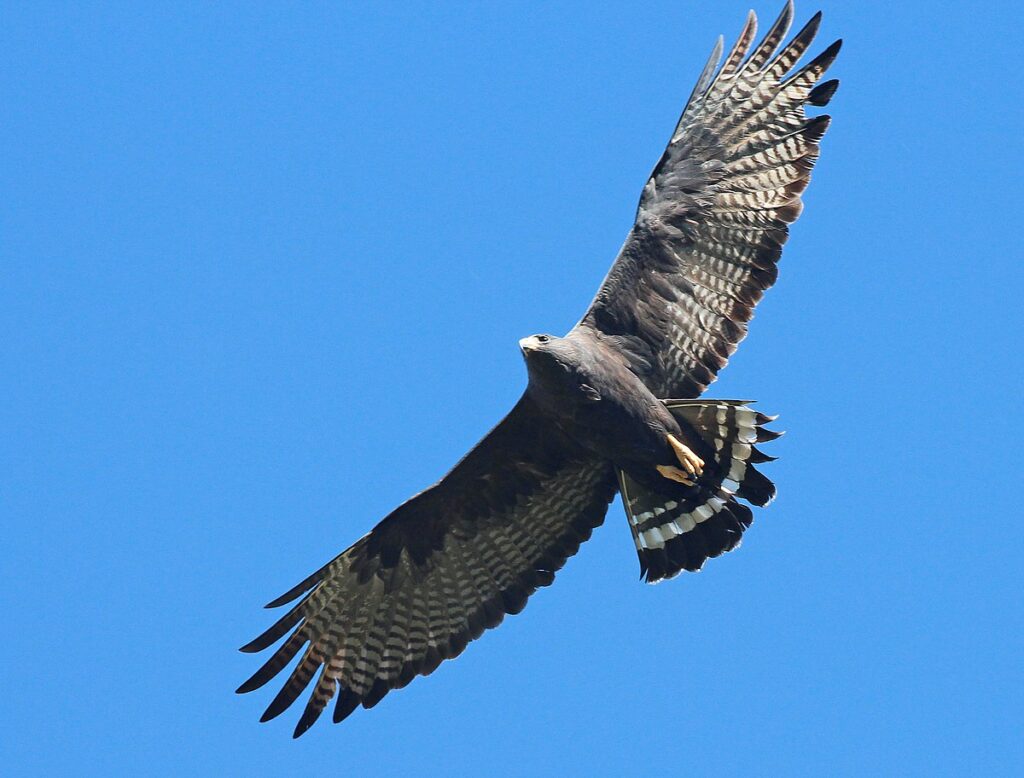
Zone-tailed Hawks are medium-sized, all-dark hawks with long tails and wide wings, slender. Chaparral, desert, or forages grassland; lives in river forests, canyons, and desert highlands.
Zone-tailed Hawk (adult) Hawks have a black underbelly with highly banded flying feathers and a dark strong trailing edge. Whenever they expend their tails, two to five inner bands may be visible.
Male and female zone-tailed hawks have a modest variance in appearance: Males have a somewhat distinct tail patterning than females, as well as a significantly bluer breast and backcasting than females. Females have a small advantage over males in terms of size.
Juveniles have subtle white patterning on the abdomen or chest, finely striped flight feathers, and a tail that is identical to adults.
Zone-tailed hawks are identical to turkey vultures, and they frequently utilize this similarity to their benefit, particularly during hunting season.
They have a similar flight pattern to vultures during hunting: they fly slowly and low over rough terrain, and then when they detect a target, they drop swiftly onto it.
Nesting takes place on extremely big solitary trees near riverbanks, rocks, and canyons. Zone-tailed hawks build their nests out of a cluster of sticks coated with green leaves and erected on the tops of trees, especially on the main limb, much like any other hawk.
Their eggs might take anywhere from 28 to 35 days to hatch.
Length & Weight
Zone-tailed hawks reach a height of 45-56 centimeters (17.7-22 inches), a wingspan of 78-78.6 centimeters (29.9-30.9 inches), and a weight of 610–940 grams as adults (1.34-2.07 lb).
They consume birds, amphibians, reptiles, and mammals but have also been seen eating fish.
These migrating birds are normally harmless to people unless they feel intimidated, in which case they will strike unexpectedly from behind.
6. Red-shouldered Hawk

Red-shouldered Hawks are intermediate raptors with slender bodies and relatively long tails. They have large, square-shaped wings.
The upper parts of adult red-shouldered hawks appear reddish-brown, with rich orange undersides and striped white and black flight feathers and tails.
In Florida, this hawk species is particularly possessive and solitary.
Over the last 50 years, the distribution of these hawk species has expanded.
Habitat
The clearance of woody regions, which make up a big portion of their ecology, has indeed been their biggest threat.
Red-shouldered Hawks are considered to like woody places and woodlands to live in.
This environment is also where they lay their eggs.
Both the male and female participants in the construction of the nesting site, which would be made of sticks and coated with grasses or branches.
They have been observed to utilize the very same nest year after year.
Bottomland woodlands, marshes, and forested stream areas are the preferred habitats of red-shouldered hawks.
The birds build their nests in deciduous and transitional forests near wetlands and rivers.
Open habitats including oak woodlands, riverfront woods, and mangroves, are used throughout the winter.
To aid in the detection of their meals, red-shouldered hawks in Florida have characteristics such as hearing and sight. Birds, small mammals, amphibians, and reptiles are all common prey for this Florida bird. This might change depending on the time of year.
Chipmunks, toads, voles, and frogs are the main ingredients of their diet. In some regions, they’re known to devour crayfish. Snakes, fish, mice, and huge insects are all included in this group.
7. Sharp-shinned Hawk

The Sharp-shinned Hawk is a tiny long-tailed hawk that may be found in Florida. This bird of prey is at the top of the priority list when that refers to startling beauty.
When compared to Cooper’s Hawks, Sharp-shinned Hawks possess shorter rounded wings, smaller heads, and less prominent gray crowns.
Sharp-shinned solid gray upperparts, adult striped, Red eyes, and reddish-brown underparts distinguish hawks. Their tails are long and rectangular, with gray and black stripes and slender white tips.
Brown upper bodies, yellow eyes, and streaked diffused brown underparts characterize juveniles.
Sharp-shinned Hawks are really not fussy when it refers to their environment. Lowland ecosystems, deciduous forests, agricultural fields, high montane forests, residential areas, hedgerows, and coffee plantations are all places where they may be located.
Backyards aren’t forgotten. Sharp-shinned Hawks are renowned for following backyard feeders, so keep an eye out for them if you notice them nearby.
These hawks can be discovered in confined bushy regions and woodlands throughout the winter. Nesting takes place in hidden locations, generally 20-60 feet above ground in thick conifers like fir and spruce and within a deep grove or woodland.
The building is normally done by women, while the materials are put together by men.
Sharp-shinned Hawks are skilled at moving through dense foliage, so they attack their prey with quick bursts of flight and surprise.
Small birds are their primary food, even if they might also eat small animals, lizards, insects, and frogs.
Conclusion
Hawks are outstanding hunters with a variety of flight, hunting, and behavioral features. Hawks may be found practically everywhere on the earth, with the exception of a few northern regions.
The 7 hawk species mentioned in this article are found across North America. Despite the fact that each species’ distribution is distinct, most of them will have populations that overlap.
It is critical to reduce habitat loss in needed to shield populations. Certain hawk species have strong habitats, while others are in jeopardy.
FAQ
In Florida, what color are hawks?
Red-tailed hawks are found across the state of Florida. They may usually be seen flying high over meadows or sitting near the open ground in search of prey.
Last Updated on March 22, 2023 by Lily Aldrin
